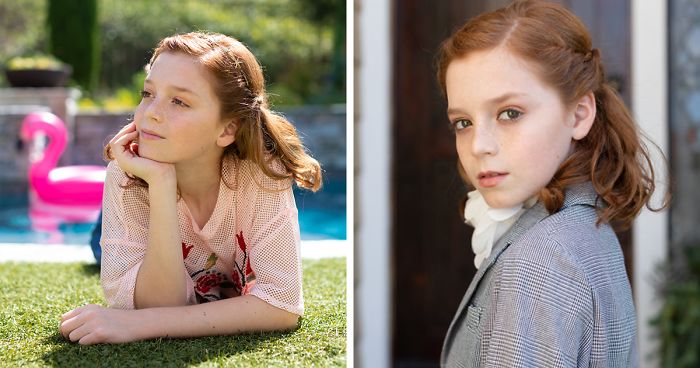
After Being Bullied, This Creative And Proud 12-Year-Old Helped 26 Schools Adopt A Dress Code That Wasn’t Gender Specific
About two years ago, while I was doing a photoshoot for a renowned hairstylist, this cute little boy walked in with his parents, and I instantly liked him. He was quiet, but he wasn’t shy at all. The hairstylist’s team had invited him to the shoot so that he could get a glimpse of how photoshoots work. He was also allowed to help them with the hairstyling creations that we were shooting for the most prestigious competition in the hair industry, the North American Hairstyling Awards (NAHA).
More info: andreadomjanphotography.com | raisingmyrainbow.com
When I asked the team why CJ wanted to be involved in the photoshoot, they quickly explained to me that CJ’s dream was to become a hair and makeup artist and that he’d been passionately learning hair and makeup styling.
I immediately liked him even more! I loved the idea that no matter what his gender was, he had a keen interest in a female-oriented field (makeup) so early on. I loved seeing how focused he was on learning as much as he could about a hair and makeup career.
Sometime later, I came across an Instagram account that was run by a mom who was raising a ‘gender creative child.’ I started looking at the photos and immediately discovered that it was CJ from the photoshoot! I spent at least an hour reading the descriptions underneath the Instagram images and getting to know their story. It was awful to learn about the bullying he had to go through in his school. My heart broke for him, and I couldn’t believe how people could be so blind and cruel. And I am just not referring to the children bullying him at school how could parents tell their kids not to be friends with CJ (even though they had liked him before) because he had come out as gay? What kind of message is that for their children and future generations?
We all want to be accepted and loved, and everyone deserves the right to be accepted and loved. His peers rejected this little boy, and rejection is one of the cruelest things you can do to another human.
When people bully or are cruel to someone they don’t understand, I always wonder what they would do if they were in the same position. How would they feel if they put themselves in his shoes for a day? The thing that is amazing is that CJ only uses these experiences to help him grow stronger and be a role model for other children like him.
According to federal law, students have the right to dress and present in a way that is consistent with their gender identity, so long as they follow rules for how to dress that apply to all students. This includes how they dress at school every day as well as for dances, graduation, and other school events.
It’s super easy. Watch. Instead of saying “Dress for students should be collared shirts and casual pants for boys, and dresses or nice pantsuits for girls. If girls choose to wear spaghetti straps or strapless dresses, they must wear a sweater at all times.” Try something like this “Dress for students should be collared shirts, casual pants, dresses or nice pantsuits. If students choose to wear spaghetti straps or strapless dresses, they must wear a sweater at all times.”
He says “I haven’t always felt that way. I’ve been bullied, badly, but I’ve always come out stronger. Bullies aren’t going to get me to stop being me. I think it’s important for people – including bullies and haters – to see me because people need to see there are kids like me out there. Gender creative kids need to see other kids like themselves. The more people see people like me, the less ‘different’ we are and the more they accept people like me. Besides, I’m not ashamed of who I am.”
Not only has CJ been brave enough to follow his own path, but he has also helped to raise awareness in his school and community. He is currently an advocate for the LGBTQ and nonbinary communities and says that “My mom says that if you are in a position to help other people, you should. So that’s what I do. I helped make my elementary school the first school in the district to adopt a dress code that wasn’t gender-specific. One year later, the dress code was used as a model for implementation at every elementary school in the district. That’s 26 schools! Through meetings and email campaigns, I got my school district to stop sex/gender segregation in elementary school PE classes and to stop having special event dress codes that were illegal because they discriminated against gender creative students. If I can see a way to make life better and easier for gender creative people, I always try to do it. Being kind, sticking up for others and not being a jerk. That’s what life is all about.”
51Kviews
Share on FacebookI'm more worried about what is so scandalous about girls shoulders that they have to have them covered 🤔
It's basically a still-prevalent dark age Catholic mentality.
Load More Replies...lmao its 2020, accept people who they are already, if you don't its your choice and you'll get bad karma on you anyway
john that is not the same thing and also hope you learned your lesson about keeping your two cents to yourself
Load More Replies...Alex K, I've encountered people who did not look fierce like lions, but they certainly had guts! Anyways, I don't think fierce is used here to mean "physically ferocious" so much as "distinctive and not afraid to be distinctive".
Load More Replies...IMHO at his ages, it still can go either way, and to be honest it doesn't matter (to me). CJ should be allowed his own course. I assume his parents mean the best (most parents do btw) but it also means that his parents / ppl should leave CJ free to determine his/her/its course. This all aside, CJ looks like a powerhouse soul which should be protected and nourished at the same time. Wishing all the best. Life can be a struggle what ever your path may be.
Sorry but the article refers to cj as him...there is no mention of transitioning into a female...so its wrong to make that assumption
Load More Replies...I'm a straight, 42yo dude, and kinda jealous of this kids fashion sense. You go CJ, you do you.
I never liked formal wear.. I do know that we still have events like that and it can be useful to learn how to get dressed up as a skill in life, however, I believe that should mean "wear some kind of suit or dress", and whether you are man or woman, or neutral, you should get to pick what uncomfortable thing you're having to be shoved into for hours. I'm female and I would much rather wear a suit. I'm still celebrating the occasion and being professional, but that pure hell of finding a bra that goes with that special dress... uhg! That said... if you want to go through that, man, woman, or otherwise, you should have the choice. I guess that's all I'm wanting to say. People should have a choice of some kind.
I totally agree with you about formal wear. I am more of a pants girl than a dress girl. When I graduated from college I wore a nice dress shirt and capri pants under my cap and gown. I still felt nice and thought my outfit was cute.
Load More Replies...It takes guts to swim against the waves, and go beyond what other people describe as normal. I am proud of what you do. Stay as you are!!
I love this!! I personally am in the LGBTQ, I'm Bi and my parents are against it. I'm proving them wrong!
Finally a non gender binary story that's actually well grounded in rationality and reason. This seems like a normal, well adjusted mom and a kid who's got a good head on his shoulders. If more people were sensible like these two it would go a LONG way into making this sort of thing no big deal. It's the SJW types who make people roll their eyes at and hate on kids like this. If all he's saying is "let us wear what we want regardless of our peeny's and ginney's" who gives a s**t? And "who gives a s**t?" is exactly where we should be with this issue. It's not hurting anybody (this isn't hormone therapy or surgery for children) so it shouldn't matter in the least.
12 years old and this kid has a better fashion sense than I do! Way to go CJ. I admire their style and fearlessness to express themselves as they wish.
This could be my kid. She started off life as my little boy, but it clearly became obvious that she was a girl. From the time she was 18 months old. Everything girly and pink - that's what she wanted. I (and my husband) never said no to anything. But somewhere along the line she realized she had to hide it. She has the same lovely red hair as CJ, and at 19 is now starting the process of medically becoming the worman she's always known herself to be. I love CJ's parents. I'm sure they just love and support their child, and probably don't feel like they're doing anything special (even though they are).
I wish your daughter luck in her transition into being a woman.
Load More Replies...I think everyone should be who they want to be and not feel shame. The people who care about you will love you regardless of what you choose to be.
I think CJ should have the freedom to be who he wants to be and wear what he wants to wear and it's unfortunate that he was bullied. On the other hand, I am not okay with puberty blockers or any long-term effects until he's legally an adult. Let kids be kids, but make sure they don't make any mistakes they will regret later! As for the they/them terms, using they/them for a singular person with an unspecified gender has been around already ("used with a singular indefinite pronoun or singular noun antecedent in place of the definite masculine he or the definite feminine she"), so everyone needs to calm down about that. Bottom line, live and let live and respect other people's decisions as long as they don't cause any harm.
I don't think CJ is on any puberty blockers!
Load More Replies...That outfit with the plaid blazer is AMAZING, this kid has some incredible style
I have read about CJ previously and he gives me so much hope! I dream of being that open and comfortable with myself one day.
It's great to make those small steps to self-confidence. You might get knocked down or have off days from time to time, just because none of us is perfect. Think of change as a process and celebrate those small victories, because they add up. Bless you, Lauren Baker, and all the best!
Load More Replies...So some of the comments say that he's being put on puberty blockers?? I totally support this boy, but as for puberty blockers, I feel like that at 12, he too young to make that kind of decision fully understanding the consequences. Identity also swings around a lot at such an age. If he blocks his puberty changes, there could be bad side effects should be choose to stop taking the blocker, with stunted growth & other issues. Another problem is that he may remain pretty small (not that being short is an issue. But natural height shouldn't be supressed. It could have adverse health effects). My brother is 11. I take psychology. I can say pretty certainly that personality is still developing and it's just overall not the best idea to do this. I rlly hope they didn't put him on blockers.
At no point does it say he is on puberty blockers. Boys are supposed to be flat and have no hips. And 12 year old boys are tiny compared to girls because they aren't old enough for puberty yet.
Load More Replies...CJ is such a beautiful soul, inside and out! And his mother is so awesome for the love and support she gives!
I consider myself pretty open and aware of gender options, but this article shook up my complacency of how enlightened I see myself. What a fantastic scrambling of the signals I thought I knew. He is male, a boy (biology does not equal gender), gay, and cross-dressing. Also young, wise, and strong. I love that adults around him heard the content of his message and didn't get too distracted by his age or appearance. My goal as a parent is to not squash the expression of my daughter being herself. I love this crack in the culture that CJ is jamming himself into and opening up. Like water cracking a mountain.
You do sound wise yourself, through your self-awareness and willingness to question and adjust your views.
Load More Replies...Our uniform (90s) the tops were the same and we had the option of skirt, shorts, or pants.
But could the boys wear the skirts if they wanted?
Load More Replies...Sometimes, I guess wrong, but I'm always happy to learn something new! In this case, I initially thought the same thing as you, but I don't feel cheated at all -- CJ rocks!
Load More Replies...well, actually no. there is such a thing as being intersex at birth, try getting educated before you start to comment
Load More Replies...I think junior conformists can be taught to open their minds a little. When I was in elementary school, teachers had a big impact on how children treated each other, especially in the lower grades. When I chat with very young relatives, I sometimes mention unusual former classmates who had admirable qualities: the very overweight boy who had a good personality, principles, and guts; the goofy kid who was funny and sweet; the girl who had trouble with math and spelling, but was accepted because she had a laid-back disposition. One of my young relatives turned out to have a learning disability and he's quite open about it with me. In turn, I admire his self-awareness, his quick learning about assessing and handling people, his work ethics, and his expressiveness.
Load More Replies...Actually clothing styles are gender neutral. Clothing sizes are gendered bc girls generally need extra space for boobs and curves.
Load More Replies...Being mis-gendered might be comedy to you, not to them. What's so hard to understand in that lol. You're not a little boy anymore so this shouldn't be tough. Don't mis-gender someone if they're uncomfortable with it (which includes most people )
Load More Replies...So, you're saying that minorities SHOULD be suppressed? What's so bad about including people? What you call "Bending over backwards" (a little dramatic, don't you think?) is what we'd call just being a decent human being to people who are marginalized. If you don't think minorities should be targets then don't target them.
Load More Replies...I'm not going to dismiss someone's identity by splitting hairs on terminology. Try to look beyond the label, at the person, and accept them.
Load More Replies...It's been going on for a long time. Do some reading on native american "two spirits". They weren't brainwashed by liberal media or hollywood, they just became the people they naturally wanted to become. I doubt that many people have a good explanation for why they feel the way that they do about wanting to wear clothes that are typically associated with the other gender, but they have the guts to tell the haters to shove it and be themselves. I hear your concerns about a kid getting testosterone. When kids are young they may make decisions that they won't necessarily want to go through with for the rest of their lives. That's why in any case I've ever heard of in which kids are going through hormone therapy it's only after years of counseling. When I look at the kid in this article I see someone with confidence in himself. That alone is going to be an enormous asset as he grows to be an adult. By learning to love himself he will be better at loving other people.
Load More Replies...Instead of spreading your hate speech, how about just be kind to others?
Load More Replies...I'm more worried about what is so scandalous about girls shoulders that they have to have them covered 🤔
It's basically a still-prevalent dark age Catholic mentality.
Load More Replies...lmao its 2020, accept people who they are already, if you don't its your choice and you'll get bad karma on you anyway
john that is not the same thing and also hope you learned your lesson about keeping your two cents to yourself
Load More Replies...Alex K, I've encountered people who did not look fierce like lions, but they certainly had guts! Anyways, I don't think fierce is used here to mean "physically ferocious" so much as "distinctive and not afraid to be distinctive".
Load More Replies...IMHO at his ages, it still can go either way, and to be honest it doesn't matter (to me). CJ should be allowed his own course. I assume his parents mean the best (most parents do btw) but it also means that his parents / ppl should leave CJ free to determine his/her/its course. This all aside, CJ looks like a powerhouse soul which should be protected and nourished at the same time. Wishing all the best. Life can be a struggle what ever your path may be.
Sorry but the article refers to cj as him...there is no mention of transitioning into a female...so its wrong to make that assumption
Load More Replies...I'm a straight, 42yo dude, and kinda jealous of this kids fashion sense. You go CJ, you do you.
I never liked formal wear.. I do know that we still have events like that and it can be useful to learn how to get dressed up as a skill in life, however, I believe that should mean "wear some kind of suit or dress", and whether you are man or woman, or neutral, you should get to pick what uncomfortable thing you're having to be shoved into for hours. I'm female and I would much rather wear a suit. I'm still celebrating the occasion and being professional, but that pure hell of finding a bra that goes with that special dress... uhg! That said... if you want to go through that, man, woman, or otherwise, you should have the choice. I guess that's all I'm wanting to say. People should have a choice of some kind.
I totally agree with you about formal wear. I am more of a pants girl than a dress girl. When I graduated from college I wore a nice dress shirt and capri pants under my cap and gown. I still felt nice and thought my outfit was cute.
Load More Replies...It takes guts to swim against the waves, and go beyond what other people describe as normal. I am proud of what you do. Stay as you are!!
I love this!! I personally am in the LGBTQ, I'm Bi and my parents are against it. I'm proving them wrong!
Finally a non gender binary story that's actually well grounded in rationality and reason. This seems like a normal, well adjusted mom and a kid who's got a good head on his shoulders. If more people were sensible like these two it would go a LONG way into making this sort of thing no big deal. It's the SJW types who make people roll their eyes at and hate on kids like this. If all he's saying is "let us wear what we want regardless of our peeny's and ginney's" who gives a s**t? And "who gives a s**t?" is exactly where we should be with this issue. It's not hurting anybody (this isn't hormone therapy or surgery for children) so it shouldn't matter in the least.
12 years old and this kid has a better fashion sense than I do! Way to go CJ. I admire their style and fearlessness to express themselves as they wish.
This could be my kid. She started off life as my little boy, but it clearly became obvious that she was a girl. From the time she was 18 months old. Everything girly and pink - that's what she wanted. I (and my husband) never said no to anything. But somewhere along the line she realized she had to hide it. She has the same lovely red hair as CJ, and at 19 is now starting the process of medically becoming the worman she's always known herself to be. I love CJ's parents. I'm sure they just love and support their child, and probably don't feel like they're doing anything special (even though they are).
I wish your daughter luck in her transition into being a woman.
Load More Replies...I think everyone should be who they want to be and not feel shame. The people who care about you will love you regardless of what you choose to be.
I think CJ should have the freedom to be who he wants to be and wear what he wants to wear and it's unfortunate that he was bullied. On the other hand, I am not okay with puberty blockers or any long-term effects until he's legally an adult. Let kids be kids, but make sure they don't make any mistakes they will regret later! As for the they/them terms, using they/them for a singular person with an unspecified gender has been around already ("used with a singular indefinite pronoun or singular noun antecedent in place of the definite masculine he or the definite feminine she"), so everyone needs to calm down about that. Bottom line, live and let live and respect other people's decisions as long as they don't cause any harm.
I don't think CJ is on any puberty blockers!
Load More Replies...That outfit with the plaid blazer is AMAZING, this kid has some incredible style
I have read about CJ previously and he gives me so much hope! I dream of being that open and comfortable with myself one day.
It's great to make those small steps to self-confidence. You might get knocked down or have off days from time to time, just because none of us is perfect. Think of change as a process and celebrate those small victories, because they add up. Bless you, Lauren Baker, and all the best!
Load More Replies...So some of the comments say that he's being put on puberty blockers?? I totally support this boy, but as for puberty blockers, I feel like that at 12, he too young to make that kind of decision fully understanding the consequences. Identity also swings around a lot at such an age. If he blocks his puberty changes, there could be bad side effects should be choose to stop taking the blocker, with stunted growth & other issues. Another problem is that he may remain pretty small (not that being short is an issue. But natural height shouldn't be supressed. It could have adverse health effects). My brother is 11. I take psychology. I can say pretty certainly that personality is still developing and it's just overall not the best idea to do this. I rlly hope they didn't put him on blockers.
At no point does it say he is on puberty blockers. Boys are supposed to be flat and have no hips. And 12 year old boys are tiny compared to girls because they aren't old enough for puberty yet.
Load More Replies...CJ is such a beautiful soul, inside and out! And his mother is so awesome for the love and support she gives!
I consider myself pretty open and aware of gender options, but this article shook up my complacency of how enlightened I see myself. What a fantastic scrambling of the signals I thought I knew. He is male, a boy (biology does not equal gender), gay, and cross-dressing. Also young, wise, and strong. I love that adults around him heard the content of his message and didn't get too distracted by his age or appearance. My goal as a parent is to not squash the expression of my daughter being herself. I love this crack in the culture that CJ is jamming himself into and opening up. Like water cracking a mountain.
You do sound wise yourself, through your self-awareness and willingness to question and adjust your views.
Load More Replies...Our uniform (90s) the tops were the same and we had the option of skirt, shorts, or pants.
But could the boys wear the skirts if they wanted?
Load More Replies...Sometimes, I guess wrong, but I'm always happy to learn something new! In this case, I initially thought the same thing as you, but I don't feel cheated at all -- CJ rocks!
Load More Replies...well, actually no. there is such a thing as being intersex at birth, try getting educated before you start to comment
Load More Replies...I think junior conformists can be taught to open their minds a little. When I was in elementary school, teachers had a big impact on how children treated each other, especially in the lower grades. When I chat with very young relatives, I sometimes mention unusual former classmates who had admirable qualities: the very overweight boy who had a good personality, principles, and guts; the goofy kid who was funny and sweet; the girl who had trouble with math and spelling, but was accepted because she had a laid-back disposition. One of my young relatives turned out to have a learning disability and he's quite open about it with me. In turn, I admire his self-awareness, his quick learning about assessing and handling people, his work ethics, and his expressiveness.
Load More Replies...Actually clothing styles are gender neutral. Clothing sizes are gendered bc girls generally need extra space for boobs and curves.
Load More Replies...Being mis-gendered might be comedy to you, not to them. What's so hard to understand in that lol. You're not a little boy anymore so this shouldn't be tough. Don't mis-gender someone if they're uncomfortable with it (which includes most people )
Load More Replies...So, you're saying that minorities SHOULD be suppressed? What's so bad about including people? What you call "Bending over backwards" (a little dramatic, don't you think?) is what we'd call just being a decent human being to people who are marginalized. If you don't think minorities should be targets then don't target them.
Load More Replies...I'm not going to dismiss someone's identity by splitting hairs on terminology. Try to look beyond the label, at the person, and accept them.
Load More Replies...It's been going on for a long time. Do some reading on native american "two spirits". They weren't brainwashed by liberal media or hollywood, they just became the people they naturally wanted to become. I doubt that many people have a good explanation for why they feel the way that they do about wanting to wear clothes that are typically associated with the other gender, but they have the guts to tell the haters to shove it and be themselves. I hear your concerns about a kid getting testosterone. When kids are young they may make decisions that they won't necessarily want to go through with for the rest of their lives. That's why in any case I've ever heard of in which kids are going through hormone therapy it's only after years of counseling. When I look at the kid in this article I see someone with confidence in himself. That alone is going to be an enormous asset as he grows to be an adult. By learning to love himself he will be better at loving other people.
Load More Replies...Instead of spreading your hate speech, how about just be kind to others?
Load More Replies...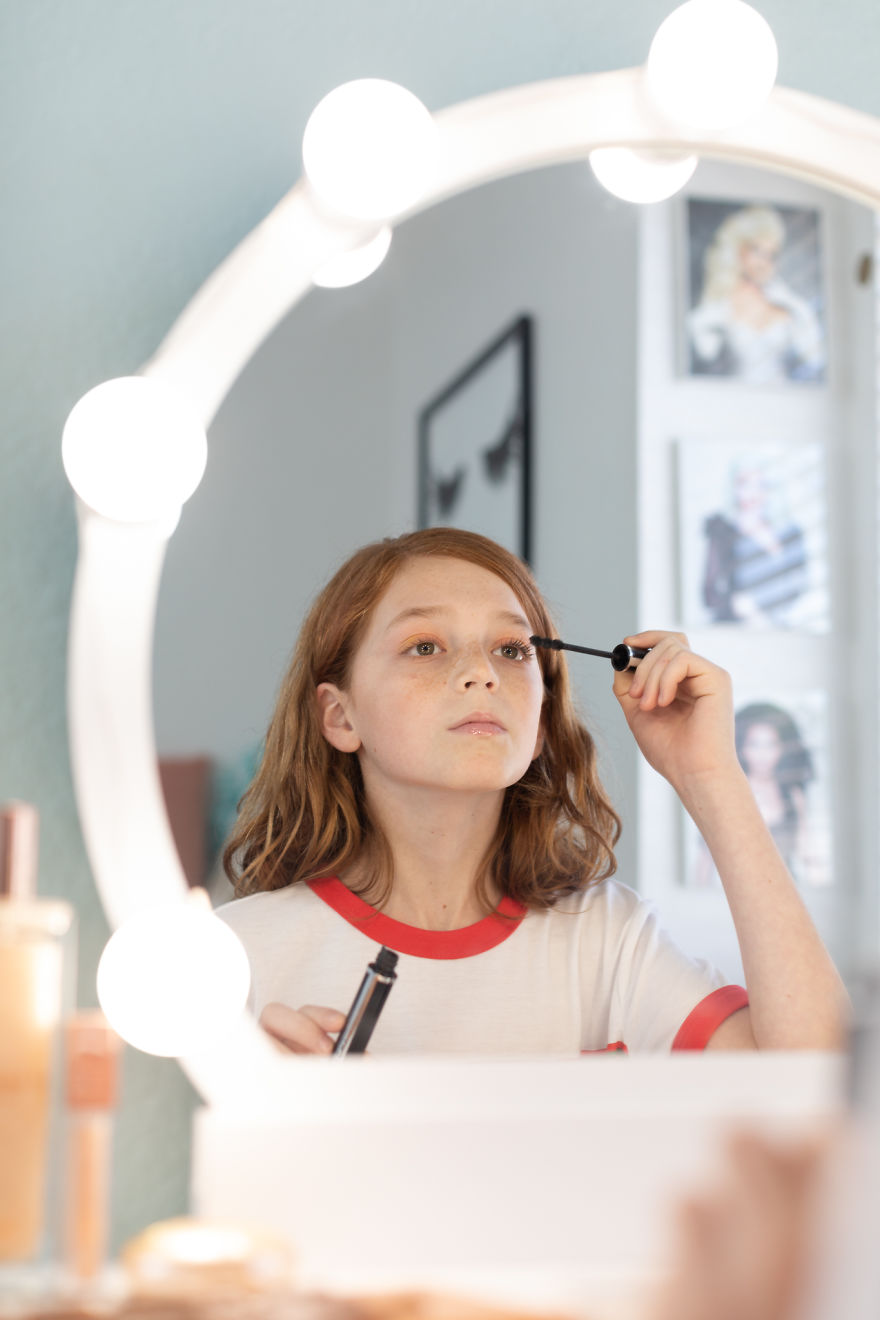
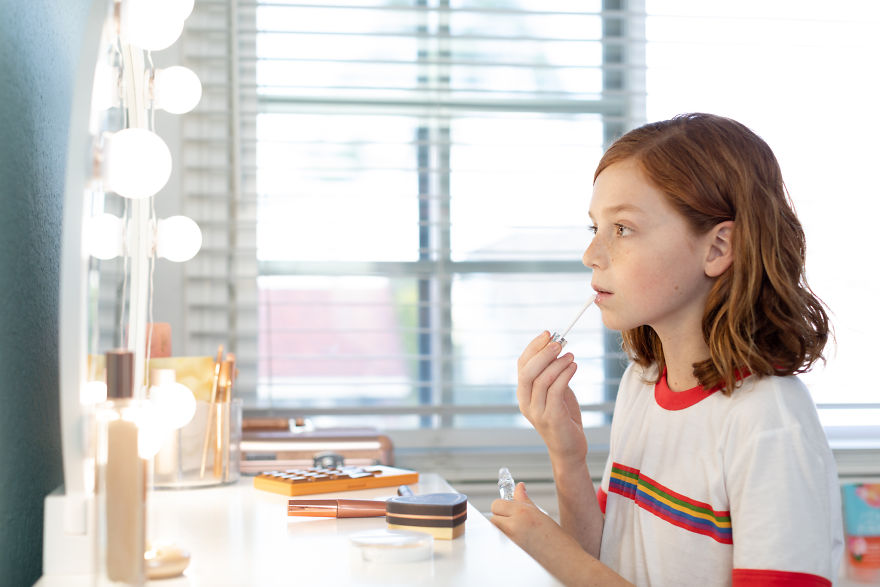
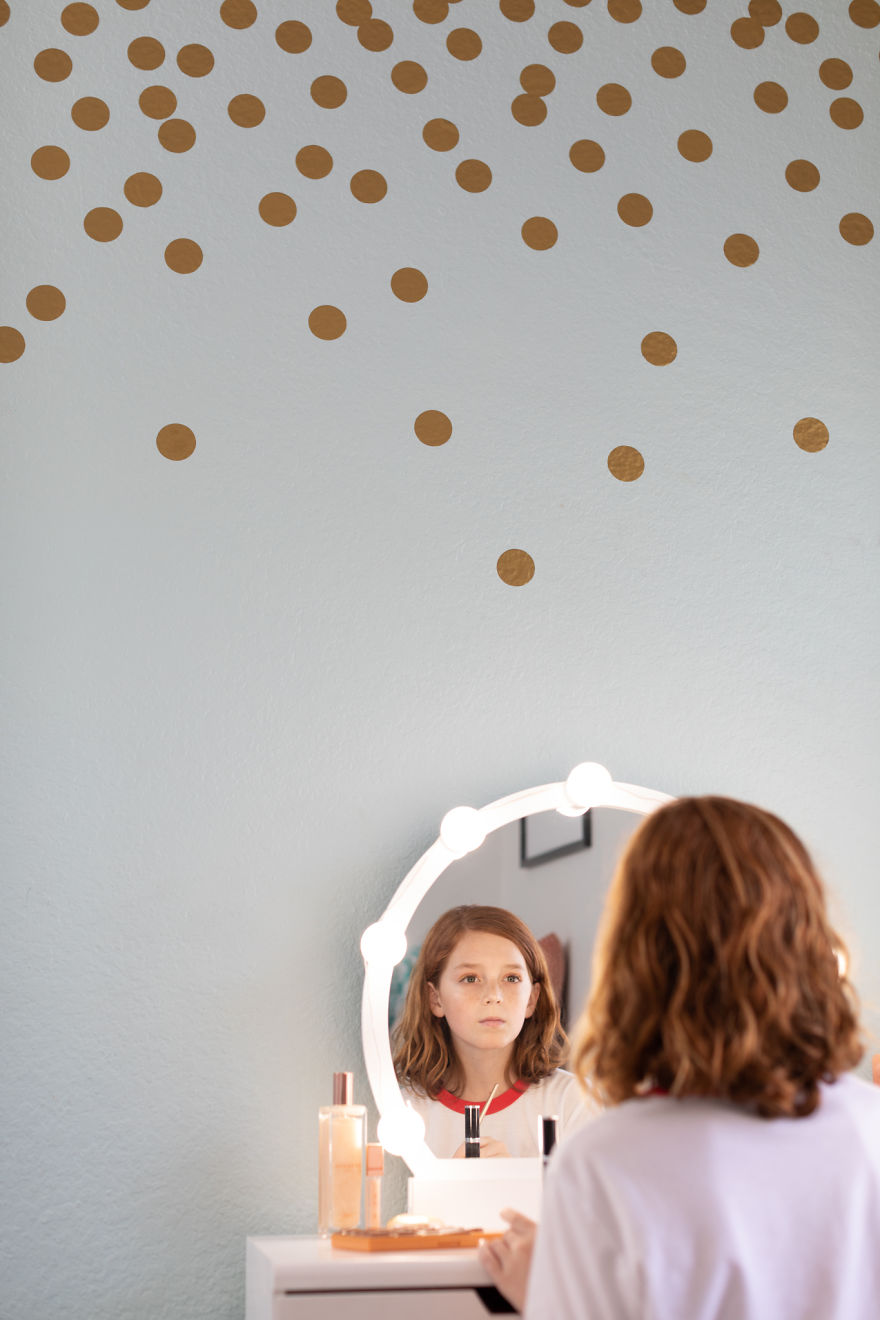
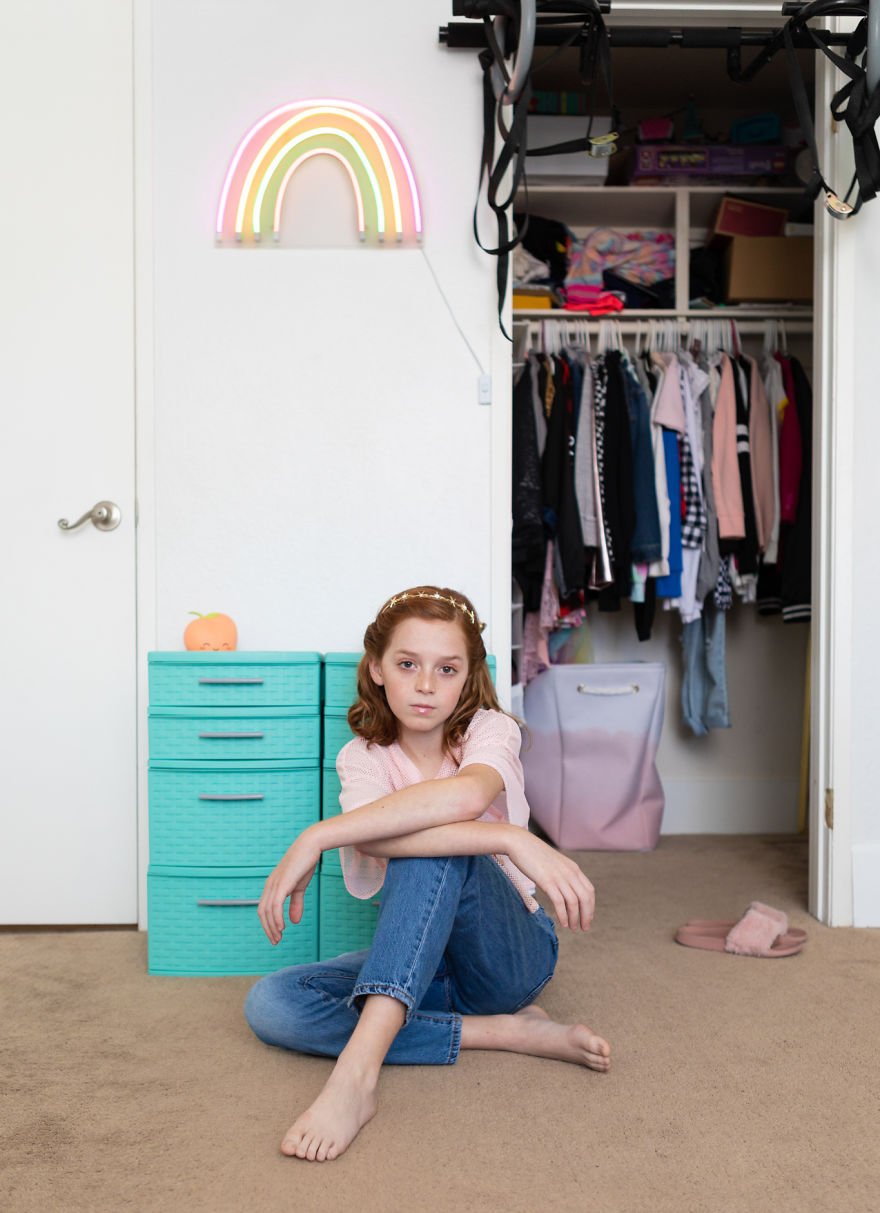
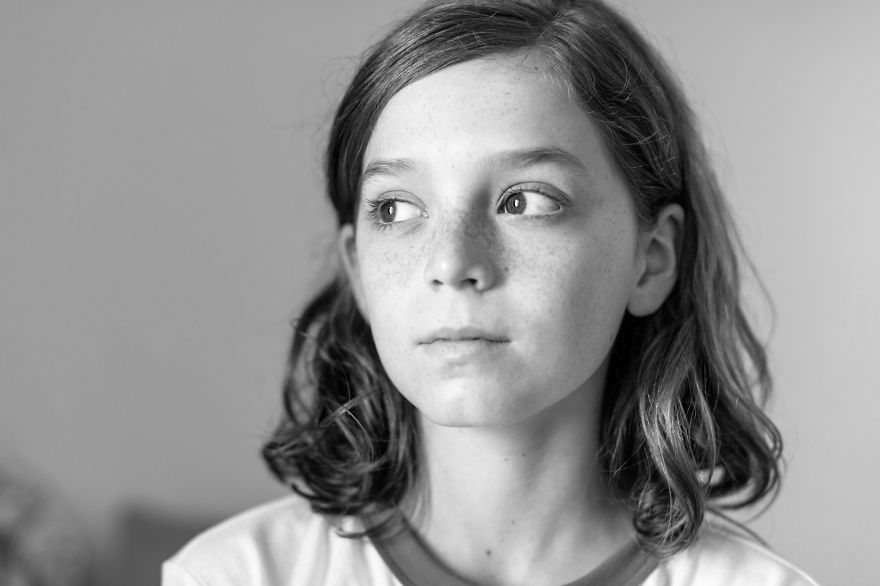
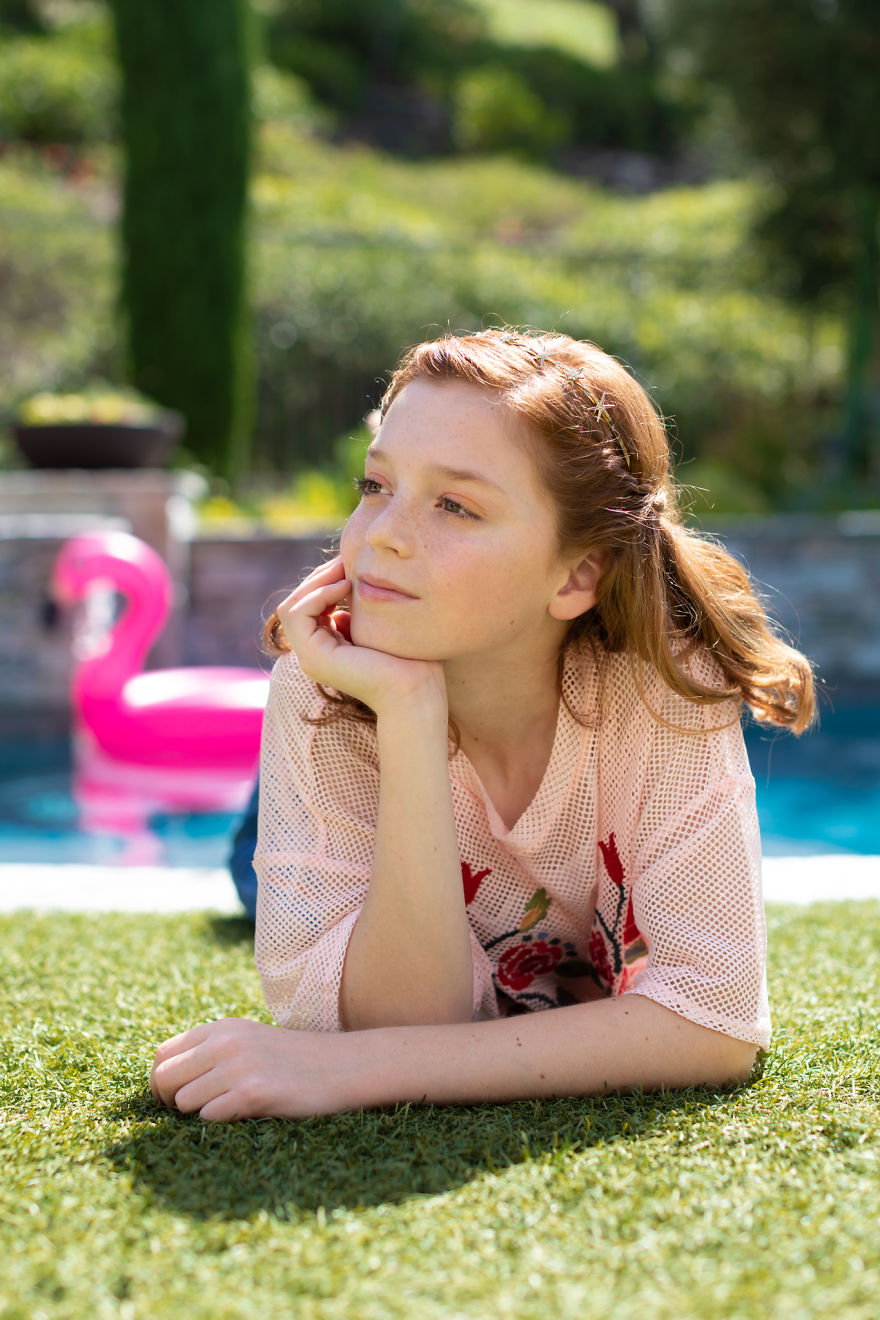
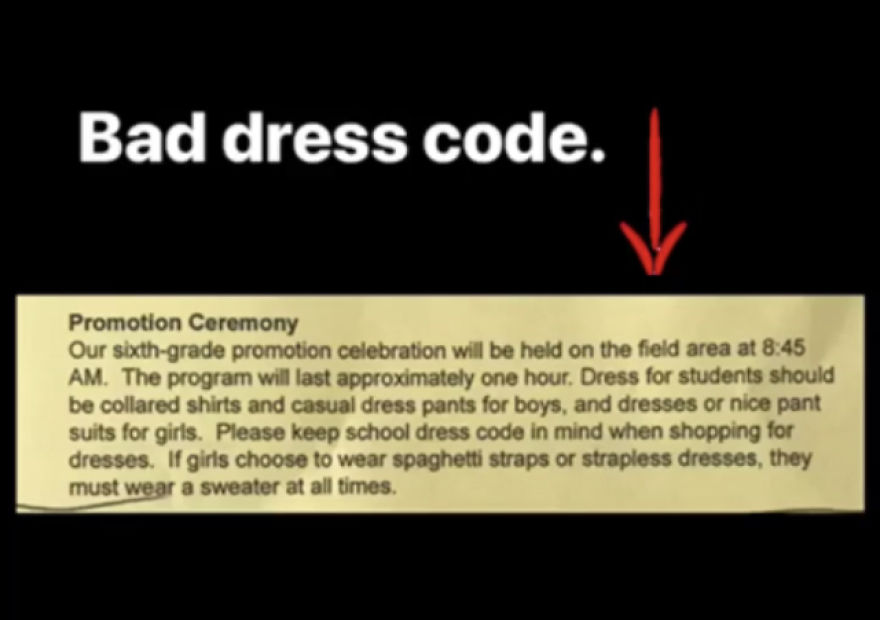
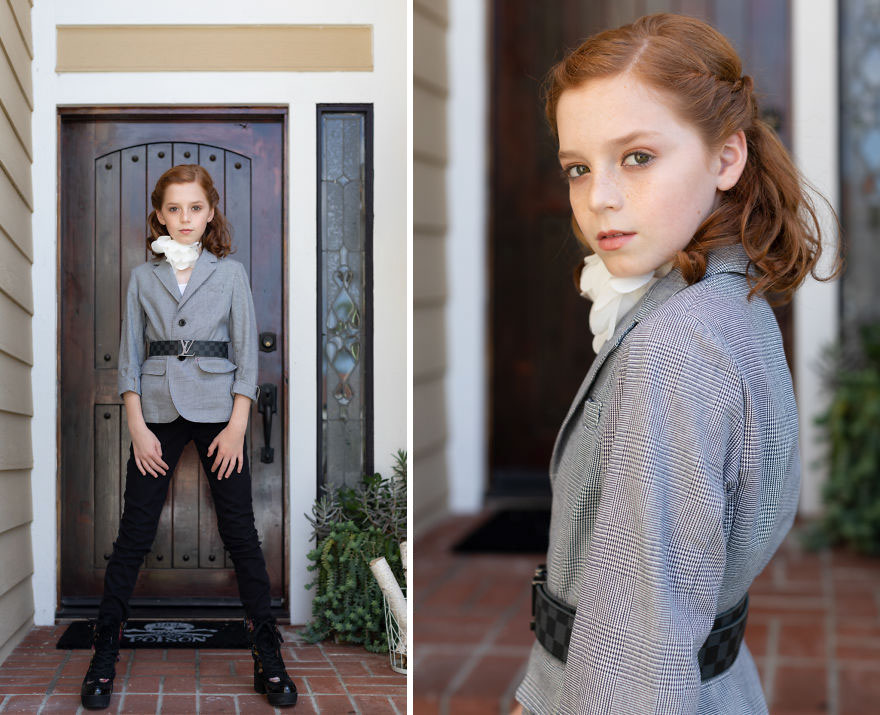
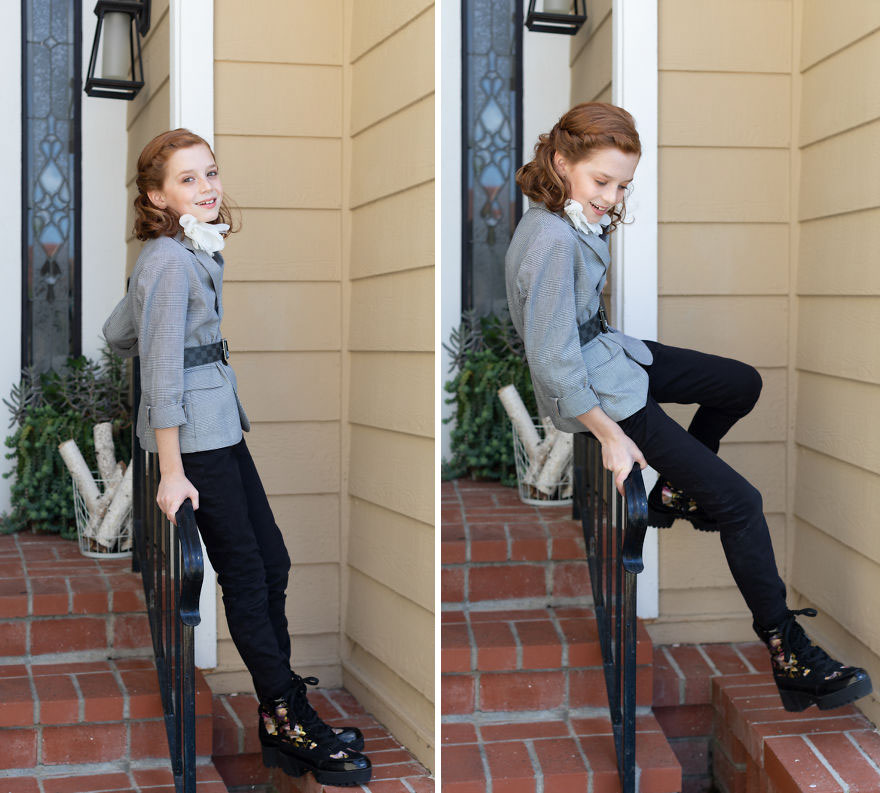
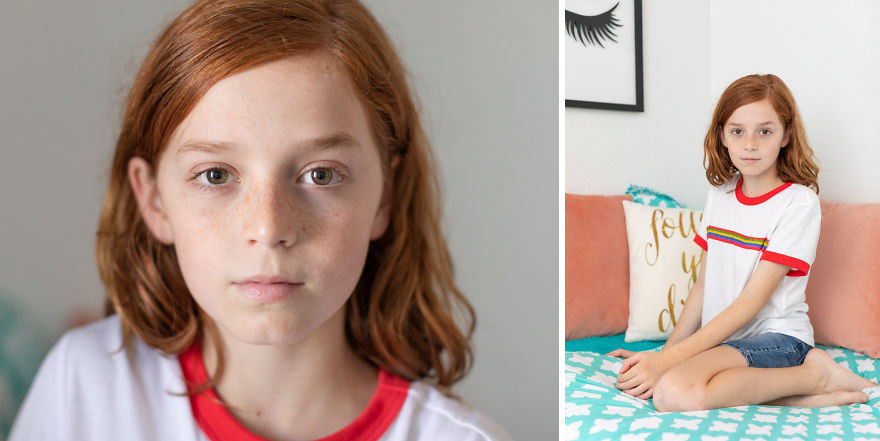
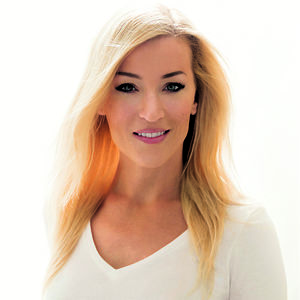



193
132